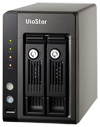Moving along in this IP Video Management series, event management is responding to events that have been triggered by built-in features of IP cameras, video servers, or intelligent monitoring software.
An event can be scheduled or triggered and once one has occured you can automatically program alerts and notifications to be sent to cell phones, via email, or even pop-up windows on a computer screen.
One of the most important functions of event managment is saving bandwidth and storage space. That is, video will not be needlessly viewed or recorded unless an event has happened.
Further, you don’t have to worry about constantly monitoring your IP camera surveillance – You will be notified if something happens.
There are several ways an event can …

